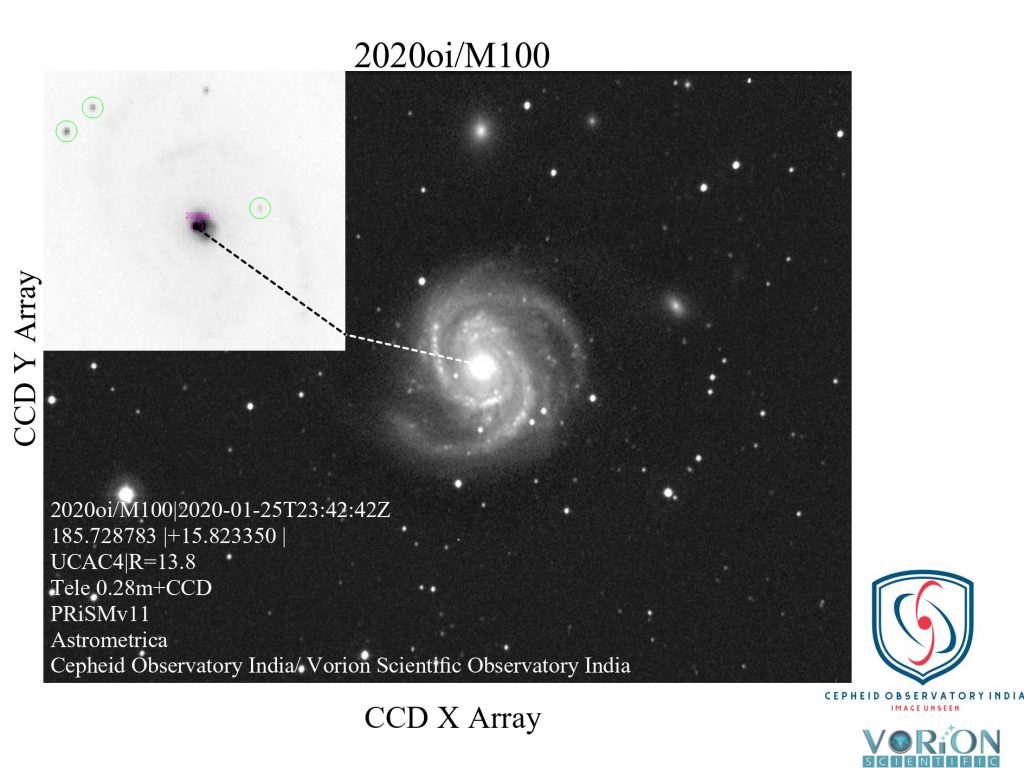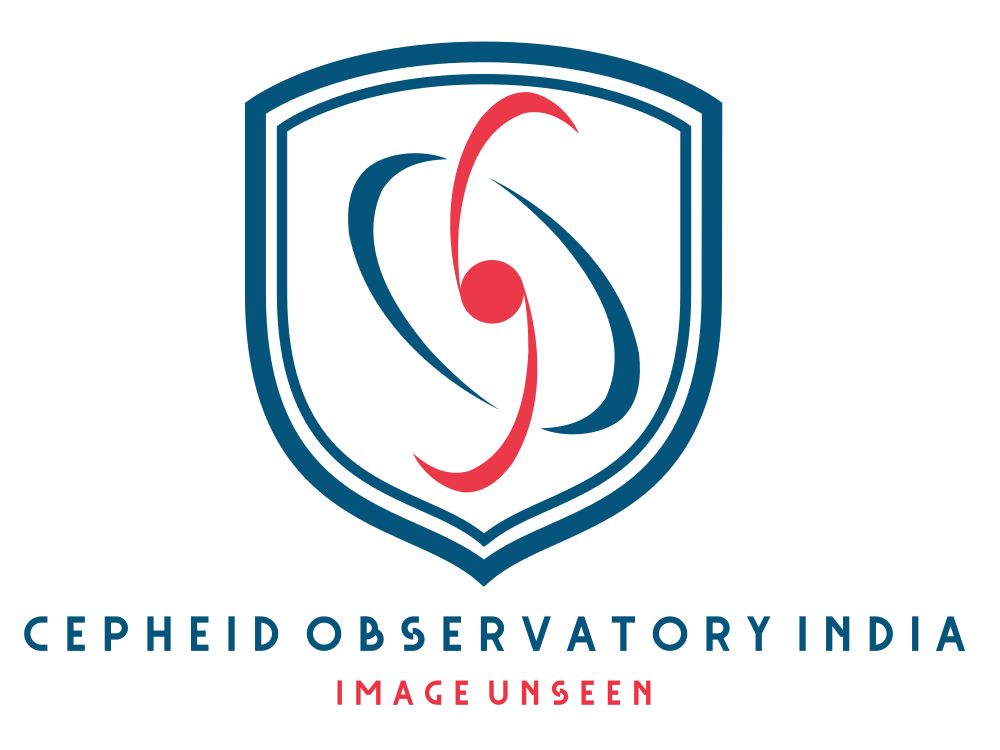Class of Nebulosity: What are the nebula? The answer is very simple in first sight that it is glowing gas and dust of a dead stars, which is either re-excitation of gas by the radiation of near by star or reflection of electromagnetic wave by its dust. But really they are rebirth places of new stars and most fascinating state of matter like neutron stars and black holes. We will discuss those bodies in next article where we will talk about the high temperature state of matter with tremendous gravitational force acting on those systems. But here it is limited only up to class of nebulas. The Galactic Nebula divided into two classes Diffused Nebula (irregular)Planetary Nebula (Regular & Emission)The Diffused Nebula again divided into two classes Dark Nebula Luminous Nebula The Luminous Nebula again divided into two classes Reflection Nebula Emission Nebula The Emission Nebula again divided into two classes Super Nova Remnants Normal H II Regions So the question still remains what is behind the distribution of gas and dust in regular or irregular shape. The answer is nova out burst. As we know that the tremendous gravitational force keeps the nuclear chain reaction on in the stars. In the fusion, hydrogen nuclei get converted in helium and other isotopes. The production of these isotopes increases the internal pressure of star and when it reaches to the critical mass where gravitational force and this outward pressure balanced, and the out burst condition become ready and star burst. This is called super nova explosion. And exploded star becomes different class of nebulae as mentioned above. If the parent star is of O / B0 class (Sorry it will be covered in other section), then the radiation from the star is so energetic that it ionizes all portion of gas and dust. This gas further emit the spectral lines fully different from the parent star is known as “gas bounded” nebula. On the other hand if the radiation emits by the near by star is no so energetic, then the all radiation just reflect by the nebular gas and dust and this gas and dust portion is called “radiation dominant” nebula. In radiation dominant nebula the spectral lines are same as of the parent star. Now let us talk about the gas bounded nebula. If gas is in regular shape like oval or circle after burst of parent star and further gas is re excited by the central residual part of parent star (also known as white dwarf) is called planetary nebula. The famous examples are NGC 7393(Helix Nebula) and M57 (Ring Nebula).The nebula which are far far beyond the reach of near by star are called dark nebula. The great rift part of our Milky way galaxy is believed to be home of dark nebula. The Horse-head nebula, IC434 are best examples. On the other hand lagoon nebula and Great Orion nebula are best examples of the emission nebula. If there is a star of spectral class above B1, then there will be emission nebula associated with it. It will ionize all hydrogen beyond Lyman head. These region are called H II or H beta regions, whereas neutral hydrogen is being called as H I region or H alpha region. The H II region is surrounded by H I region. These nebula are called emission nebula. The star below B1 class are poor producers of energetic radiation and failed to activate the gas and dust and only reflection effect will come into picture and so nebula is called reflection nebula. The M45, Pleiades is best example of reflection nebula. All emission and reflection nebulae are radiation dominant. No gas dominant diffused nebula found yet.
Author: cepheids
Spectral Class of Stars
Spectral Class of Stars: When an astronomer looks the sky, some basic questions should come in his mind. They are as follows:1. How stars do come into existence? What is their life?2. How stars maintain stock of energy?3. What happens to the energy radiated in to space?4. What is ultimate fate of universe?The life of a star is of million and million years with respect to our life of maximum hundred years, so how can we judge the whole life of a star in our life span. It is not better to observe the single star continuously over your life time, rather observe a huge set of stars and study their spectral class. The first impression and physical variable which come in picture is the color of star. In the world of modern physics, we know that it is a function of temperature (a black body radiation; λ * T = 2.8978×10−3 m⋅K) but it was very difficult to understand for our past heroes (Physicist and scientists) that color emitted by a star is basically a temperature effect and slowly all explanations goes in pocket of quantum mechanics.That was genius of Sir Joseph Fraunhofer who invented first spectrograph and Sir Norman Lockyer who told the temperature dependence of colors emitted by stars followed by Kirchhoff and Bunsen. The very first star examined, no doubt was our Sun, a gigantic burning amount of gas. Fraunhofer observed the dark lines in the spectrum but do not have explanation, until Kirchhoff came with theory that a very hot object emits all frequency of radiation and same get absorbed by the same element which emits it. The very interesting thing is that Kirchhoff did not know the model of atom and their quantum energy levels still very close to quantum mechanics.In the earlier age of astrophysics the stellar spectra was a riddle and the explanation of Lockyer was out of rule of physics i.e. he argued that the temperature of chromospheres of sun increases outwards and atom get stimulus and feels some kind of enhancement, which finally not known to the Lockyer. Lockyer also not explained why the heavy atoms resides on the upper surface of chromospheres like Ca and Na (Is gravity goes to holidays) and Why Sun’s stellar spectra dose not shows the absorption lines of different elements. Finally M.N.Saha came with answer for all unanswered question. Here, it is important about the sun that that was the very first star which was examined by the Astrophysicists. For the information point of view sun has different regions of activation like central core where hydrogen fusion take place due to enormous gravity, then photosphere, chromospheres, prominences, sunspots and spicules.Now come to point. Saha objected that rise in temperature outwards to any star is out of physics rule. But he was much aware about the statement of Lockyer. Lockyer told that atom gets stimulus and Saha argued that Lockyer was not fully incorrect. The atom suffers the combine effect of the temperature and pressure at that location as well as ionization potential of atom. Saha came up with his ionization theory which explained all is well.As per Saha’s theory, the degree of ionization of any gas depends on temperature, pressure and I.P. which Lockyer missed. You can get this formula in any book of Astrophysics. Basically, star gas always remains in the thermal equilibrium with its ion and electron pair. The gas ionized as per its I.P. and temperature and further recombined due to pressure.Now see and example, I.P. of calcium is 6.0 eV. The temperature inside the chromospheres is 7500 K and pressure is 1 atm. For this condition only 33% calcium atoms get excited. But at outer surface of chromospheres temperature is 6000 K and pressure is 0.0001 atm. In this case ionization is 95% of original neutral calcium atoms. So the finally ionization of any element in star is function of three parameters i.e. T, P, I.P.By the way the star divided in the different class was only based on their colors or can say temperature. The Harvard group of astrophysicists made a huge catalogue of star based on their colors and temperature is call Henry-Draper catalogue or (HD) catalogue. It contains details of more than 40,000 stars. The stars classified in W(WC &WN), O,B,A,F,G,R,N,K,S,M classes and each class have 10 subclasses like B0,B1….B9. It is given is table.Spectral type Temperature Color Spectral features RemarksO5-O9 40,000K-25,000K Blue – White Emission lines of He II and O II. Absorption lines of He II, He I, O II, Si IV, N III, and C III is dominant. H I is weak No star found earlier O5B0-B9 25,000K-11000K Blue – White Absorption lines of He I dominant. H II, O II are strong Some stars in OrionA0-A9 11000K-7500K White H II is very strong. Ca II is weaker Vega, Sirius, AltairF0-F9 7600K-6000K White-Yellow H II is weak. Ca II is strong. ProcyonG0-G9 6000K-5000K Yellow H II is weak. Ca II is at maximum strength. Sun, CapellaK0-K9 5100K-3500K Deep yellow-orange H II is very weak. Neutral metal lines are strong Arcturus, AldebranM0-M5 3600K-3000K Red H II is not present. Neutral metal lines are at maximum strength. Betelgeuse, AntaresR(C) 3000K Red C2, CN and TiO bands Carbon starsN(C) 3000K Red C2, CN and TiO bands Carbon StarsS 3000K Red C2, CN and TiO bands –The Image attached shows that Gauss sum fit of standard ESO data for a0i and g2v stars, where peak resides (shifted) for as per their color & temperature.Fitting using MagicPlotpro.CheersCepheid’s Observatory, RBT, India
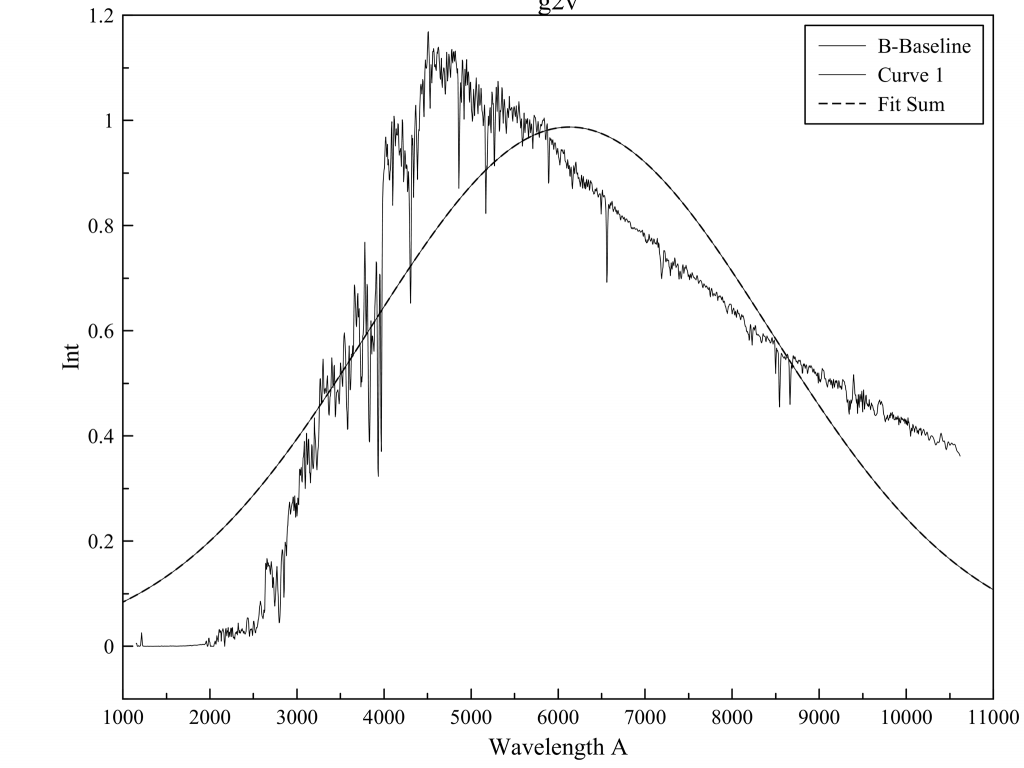
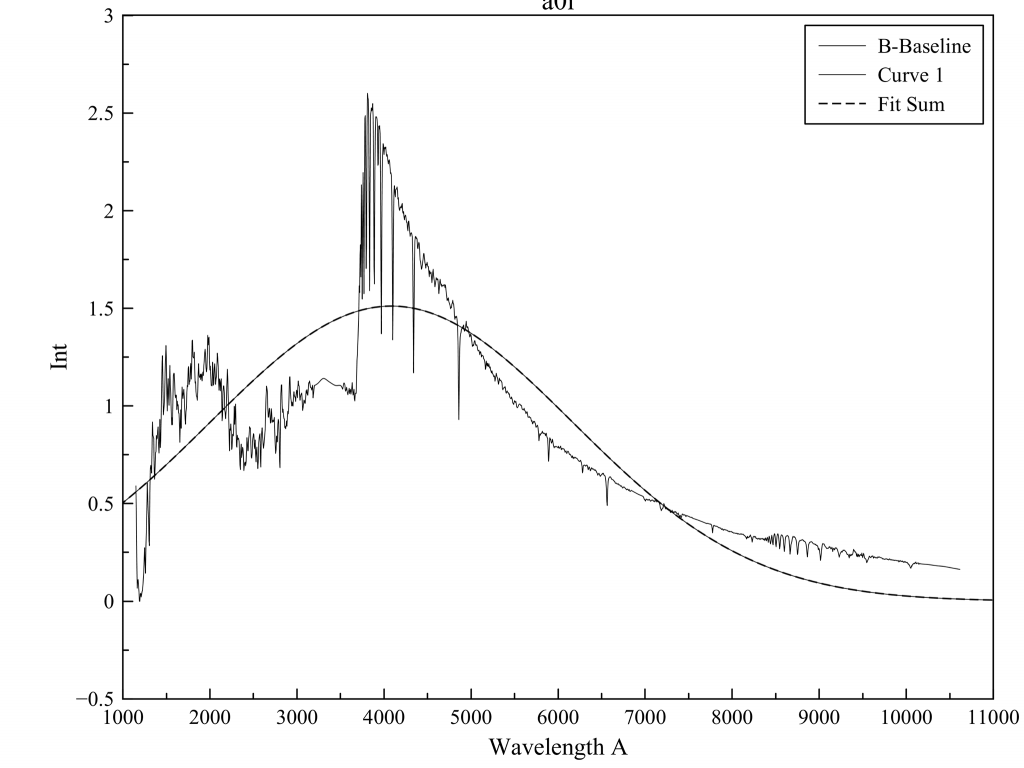
Absolute flux calibration
Here is Flux comparison of ISIS data and flux generated by NASA-IPAC tool (https://irsa.ipac.caltech.edu/…/data…/tools/pet/magtojy/) for Vega.Procedure is:1. Flux intensity drag of ISIS data using FIT files>>>then best fitting>>>then plotting w.r.t wavelength.2. Pickup flux intensity using star mag (NASA-IPAC tool) for UBVRI wavelengths>>>then interpolation of all wavelengths points similar to point no. 1>>>then best fitting>>>then plotting w.r.t wavelength. The flux intensity for UBVRI filters at central wavelength are mentioned in graph below.The star magnitude are taken from SIMBAD (but a better catalog may be used if available). In graph, we can compare that energy fluxes are almost similar from range between pointed arrows. The minor difference may be due of some off magnitude of star vega in SIMBAD database or fitting done.We see that fluxes deviate from 4200 A towards UV region. We assume that this is because of fall of CCD sensitivity (silicon band gap, works well from 400nm to 900nm and maintain same sign of slope (dF/dA). We think, this is the reason that, professional astronomers use V/R/I band filter response for absolute flux calibration. We did not find any document where U/B filters response were used for flux calibration. The change of slope of flux vs. wavelength may be a reason (not sure yet).But If We plot from 400nm to 700nm, We find both methods satisfactory. Science is fun!..![]()
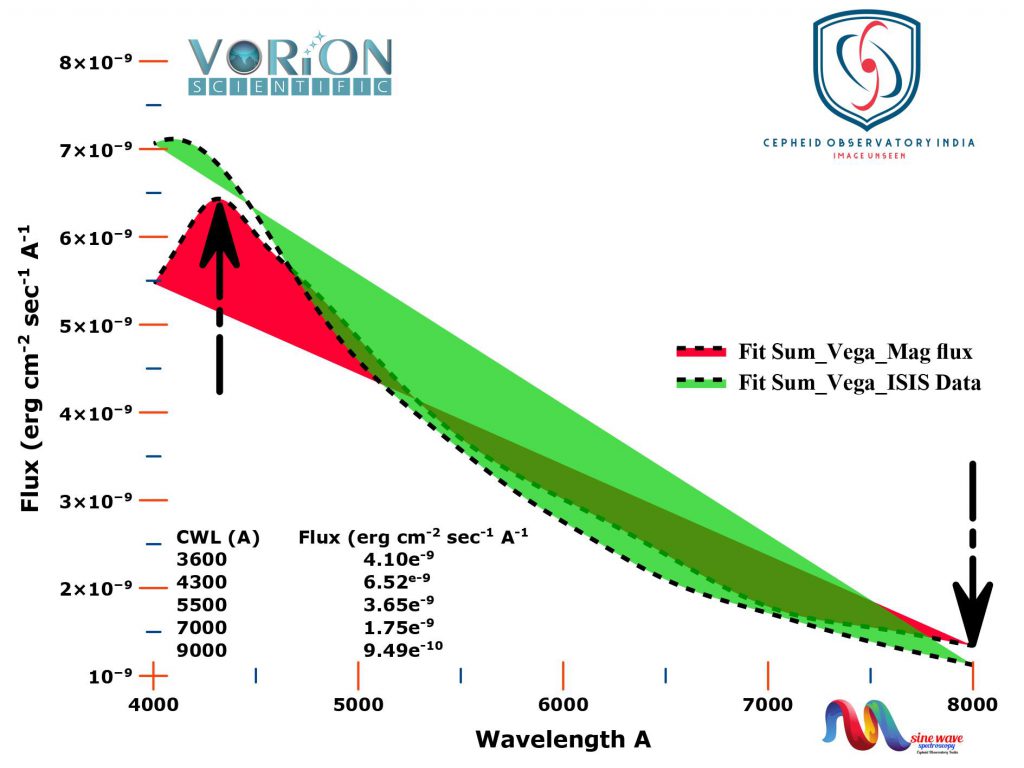
Flat Issues
Flat Issues: Tried to analyze the flat frames using PRiSMv10. The CCD Atik383L+ have typical value of full electron well equal to 26,000. Set the diffuser to telescope (3 layered white cloth) and exposed for 1×1 bin and 2×2 bin for different time intervals to get ADU counts near to half of full well capacity. PRiSMv10 analyzed the ADU by plotting each pixel counts under menu: Analysis/Histogram/Global.

SN 2016gkg (NGC613)
SN 2016gkg (NGC613) ‘2016-10-10T21:32:20’
Tele: 0.28m/f6.3, KAF8300, Clear Filter
APT Tool, Maximdl, CCDstack
Color composite:,DS9
Center (RA, hms): 01h 34m 13.0s
Center (Dec, dms): -29° 26′ 14″
Size: 24 x 18 arcmin
Pixel scale: 1.84 arcsec/pixel
Photometric magnitude = 14.49 (cal star: HD 9693), MIRA pro7.
Cepheids Astronomy Group,RBT, India.
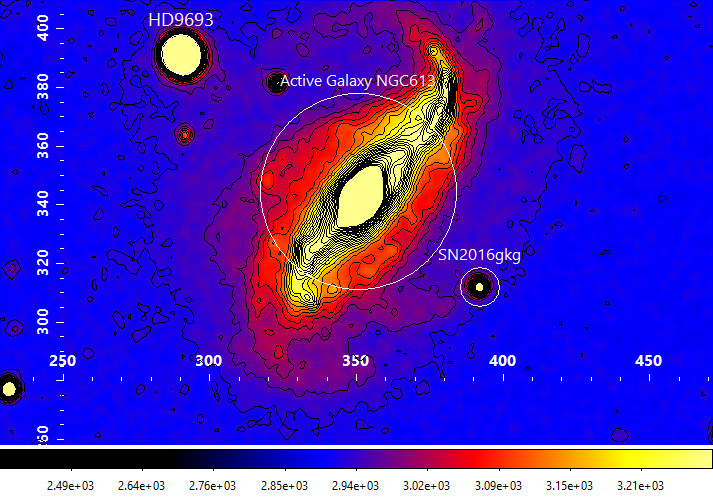
C/2017 E4 Lovejoy
C/2017 E4 Lovejoy ‘2017-03-31T23:38:58’
Tele: C11/0.28m/f10.0, KAF8300 (3326X2504, 5.4µmX5.4µm)
Filter: Clear Filter
Binning: 3X3 (16.21µmX16.21µm)
Tele field of view: 22.10acrminx16.66acrmin
Plate scale: 1.1859 arcsec/pix
Image rotation: Up is 146 degrees E of N astrometry.net
Comet phase angle: 97 deg
Exp: 21X40secs
Guiding: PHD2/ZWO ASI120MM
OBJCTRA: 21 38 06
OBJCTDEC: +09 48 53
APT Tool, Maximdl, CCDstack, DS9
Cepheids Astronomy Group,RBT, India
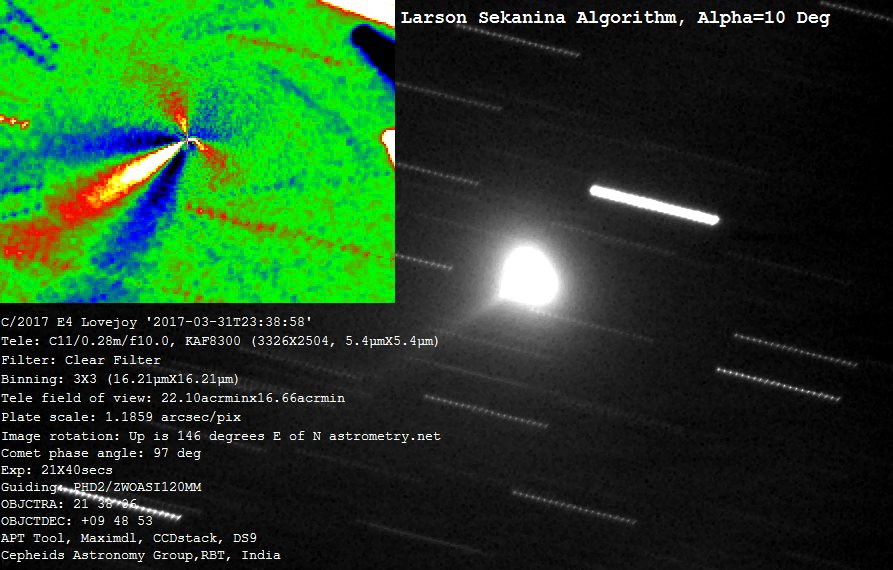
SN2018kp /Seyfert galaxy NGC 3367
SN2018kp /Seyfert galaxy NGC 3367
DIST: 43.6 Mpc/142.1 Mlyr
OBSERVER= ‘Cepheids Astronomy’
DATE-OBS= ‘2018-02-22T22:17:53’
INSTRUME= ‘ARTEMIS CCD ATIK-414ex’
ORGNAME = ‘F:\Atik CCD\PRiSM FITS\PRiSM Images\Results\ngc3367_Clear.fits’
SWCREATE= ‘PRISM, Version 10.3.42.385, 04-01-2018’ /Software Name and version
ORIGIN = ‘Cepheids Astronomy’ /Origin place of FITS image
SITELAT = ‘+24:55:00:00 ‘ /Latitude observatory
SITELONG= ‘+75:33:58:99 ‘ /Longitude observatory
UT = ’22:17:53.33 ‘ /UT begining of observation
OBJCTRA = ’10 46 35.441 ‘ /Object Right Ascension (J2000)
OBJCTDEC= ‘+13 45 08.95 ‘ /Object Declinaison (J2000)
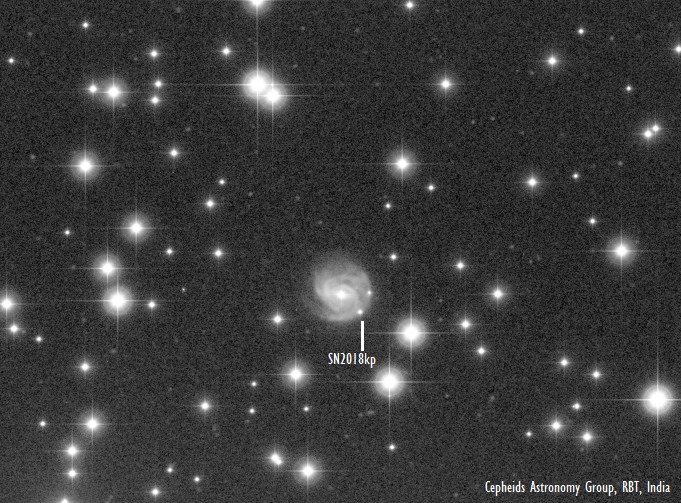
21P/Giacobini-Zinner
21P/Giacobini-Zinner, 2018-10-14T23:20:44.01 UT, Speed=2.39″/min, PA=164.6Deg, UCAC4, Mag=13.3 nucleus,
+24:55:00N, +75:33:59E,EXP: 1140 secs,12.9µm/12.9µm, 19’X14′, ATIK-414exmono, R Bessell, 1.66″/pix,
C11/f5.5/fl 1548.6mm/D280mm, OBJCRA 07 13 54.182, OBJCDEC= -15 33 58.15, CCDT= -4.9 DegC.
Astrometrica “ADES”, PRISMv10.
Cepheids Astronomy, RBT, INDIA.
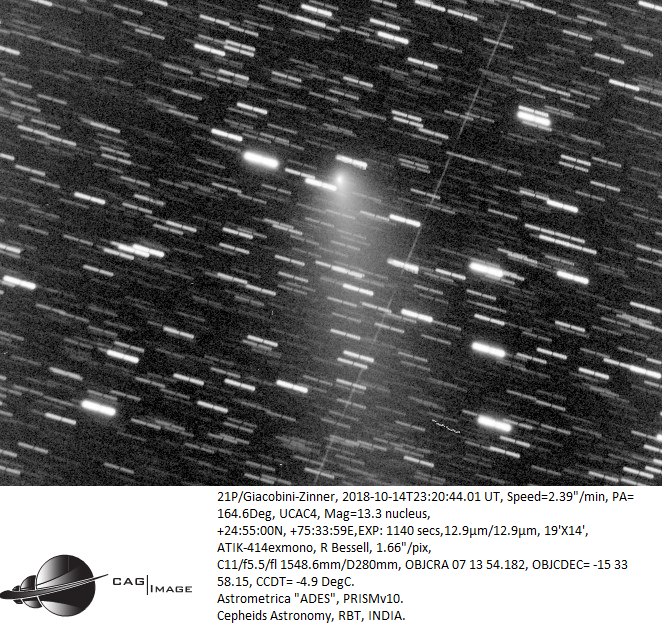
C/2018N2(ASASSN)
Name : C/2018N2(ASASSN)
Perihelion date : 2458798.4623 10-11-2019 23:05:42
Eccentricity : 1.000165
Inclination (°): 77.5312
Node longitude (°): 25.2588
Argument (°): 24.3963
perihelion distance (ua): 3.124639
Absolute Magnitude : 6
Activity Parameter : 4
Julian day : 2458838.17830578
Sun elongation (°) : 101
Geocentric distance (ua) : 2.8075
Speed (arcsec/hour) :13.92
Angle (PA) : 281.84 °
RA speed : -17.6 arcsec/hour DEC : 2.9 arcsec/hour
2019-12-20T15:23:17.373600, UCAC4, Mag=14.2 nucleus
+24:55:00N, +75:33:59E,EXP: 1170 secs,12.9µm/12.9µm, 19’X14′,
SX TRIUS825, R Bessell, 1.66″/pix, CCDT= -10.0 DegC
C11/f5.1/fl 1439mm/D280mm,
OBJCRA 23 32 51.900, OBJCDEC= +39 20 56.21
Astrometrica “ADES”,PRISMv10
Cepheids Observatory, INDIA
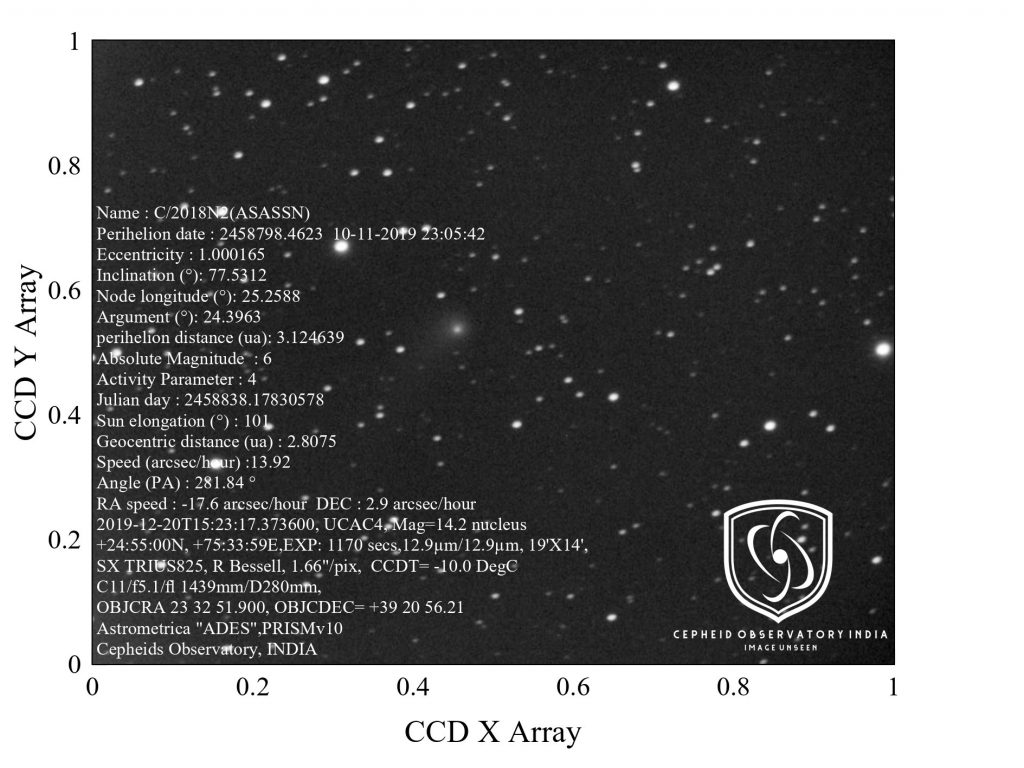
2020oi/M100
2020oi/M100|2020-01-25T23:42:42Z
185.728783 |+15.823350 |
UCAC4|R=13.8
Tele 0.28m+CCD
PRiSMv11/Astrometrica
Observers: V K Agnihotri/K Vora
Cepheid Observatory India/ Vorion Scientific Observatory India
